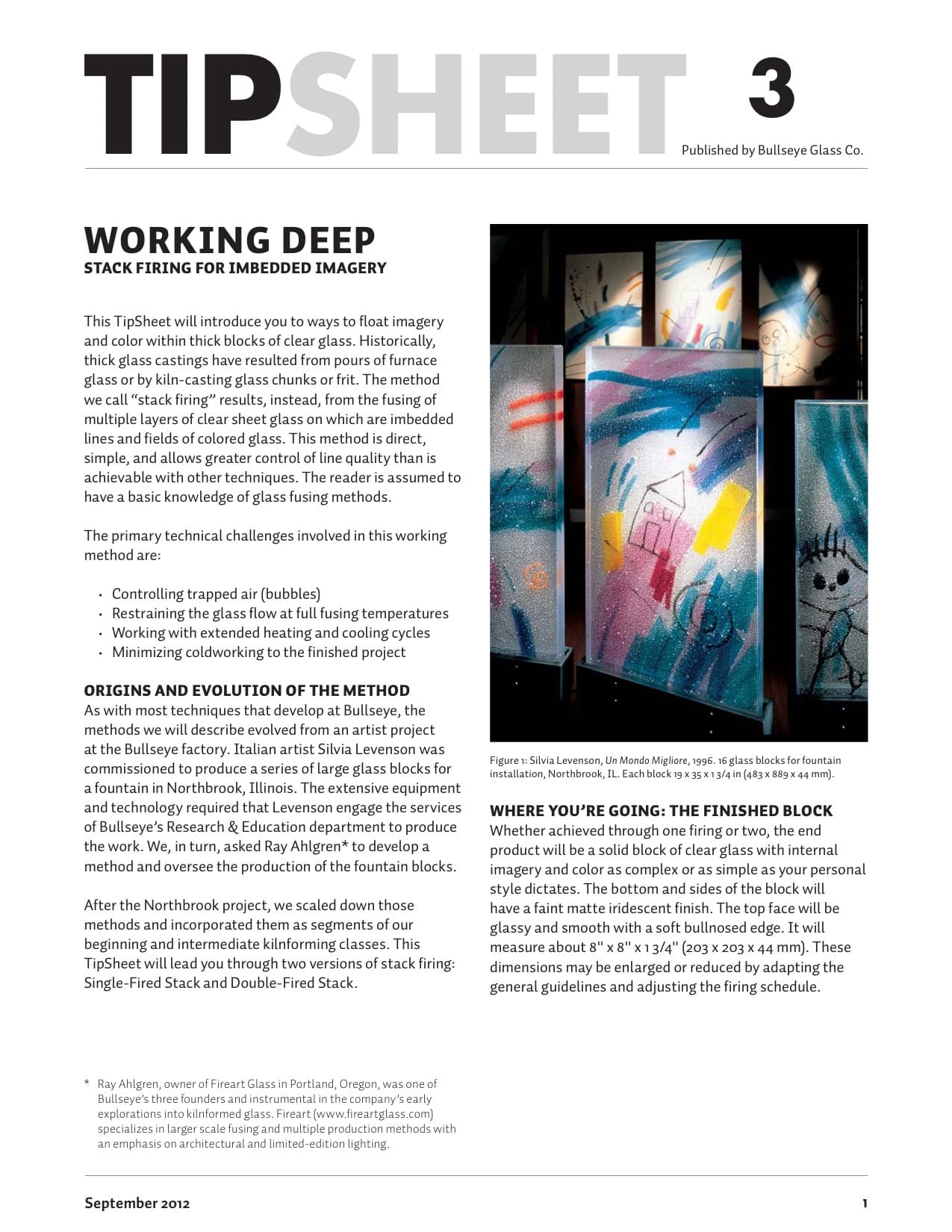Stack Firing for Embedded Imagery
This TipSheet will introduce you to ways to float imagery and color within thick blocks of clear glass. Historically, thick glass castings have resulted from pours of furnace glass or by kiln-casting glass chunks or frit. The method we call “stack firing” results, instead, from the fusing of multiple layers of clear sheet glass on which are imbedded lines and fields of colored glass. This method is direct, simple, and allows greater control of line quality than is achievable with other techniques. The reader is assumed to have a basic knowledge of glass fusing methods.
The primary technical challenges involved in this working method are: 1) Controlling trapped air (bubbles), 2) Restraining the glass flow at full fusing temperatures, 3) Working with extended heating and cooling cycles, 4) Minimizing coldworking to the finished project.
Origins and Evolution of the Method
As with most techniques that develop at Bullseye, the methods we will describe evolved from an artist project at the Bullseye factory. Italian artist Silvia Levenson was commissioned to produce a series of large glass blocks for a fountain in Northbrook, Illinois. The extensive equipment and technology required that Levenson engage the services of Bullseye’s Research & Education department to produce the work. We, in turn, asked Ray Ahlgren* to develop a method and oversee the production of the fountain blocks. After the Northbrook project, we scaled down those methods and incorporated them as segments of our beginning and intermediate kilnforming classes. This TipSheet will lead you through two versions of stack firing: Single-Fired Stack and Double-Fired Stack.

